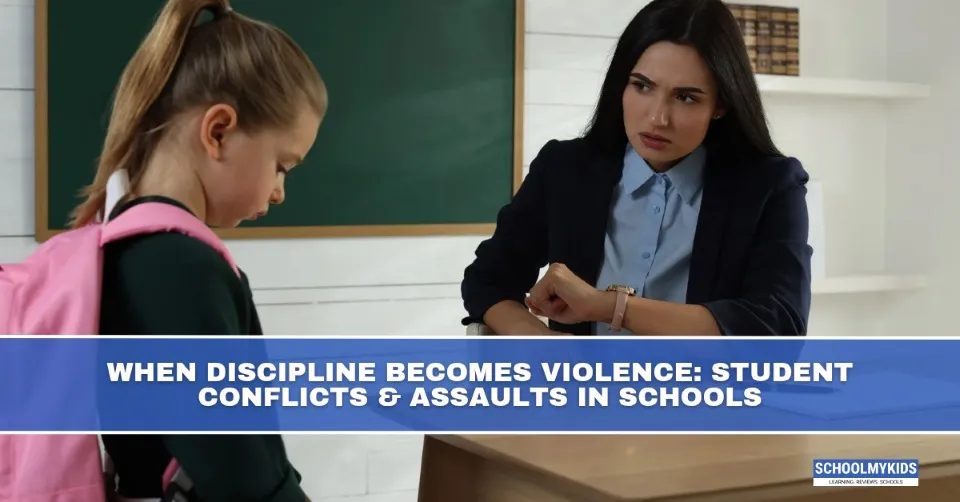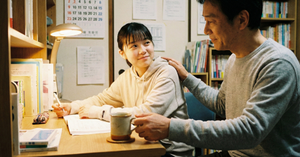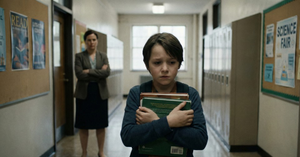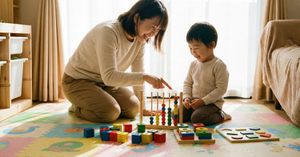There was a time when a stern look or a warning was enough to bring discipline in classrooms. But today, we’re hearing heartbreaking news; teachers kicking a child, slapping a student repeatedly, or locking a kid in a room “to teach a lesson.” Schools, meant to be safe spaces, are turning into places where fear is mistaken for discipline.
Recently, two shocking incidents in Karnataka, one in Bengaluru and the other in Chitradurga, have highlighted how easily “discipline” can hide behind the mask of violence. In Chitradurga, a nine-year-old boy at a residential school was brutally beaten by his teacher for calling home without permission. The teacher, seen kicking the child as he begged for forgiveness, later went missing after the video went viral.
In Bengaluru, another Class 5 boy was beaten with a PVC pipe by teachers and a principal for being absent for two days. They even locked him alone in a room for hours. Imagine the fear, the helplessness, the confusion of a child who trusted his school, now scarred by those who should have protected him.
And it doesn’t stop there. A teacher in Kilpauk, Chennai, was suspended after slapping a Class 3 student repeatedly and threatening to strip him in front of his classmates, all for not reciting a poem. The school called it an isolated incident. But how many times have we heard this phrase before?
When “Discipline” Turns into “Damage”
Discipline is meant to guide children, not destroy their confidence or dignity. What begins as “correction” can easily become cruelty when anger takes over reason. No child learns better through fear. Instead, they learn to withdraw, lie, or suffer silently. Emotional scars are often deeper than bruises.
For many children, this violence creates long-term damage like anxiety, fear of authority, and loss of trust. Some start dreading school. Others internalize the message that pain is part of learning. That’s not education. That’s trauma disguised as discipline.
Even for teachers, these moments of anger leave guilt, regret, and in many cases, the loss of career and respect. Nobody wins in violence; not the teacher, not the student, not the school.
Where Should Parents and Teachers Draw the Line?
We, as parents, often believe that discipline at home or school is necessary. And yes, boundaries and rules are essential as they build responsibility. But discipline should never humiliate, intimidate, or harm.
The line is crossed the moment a child is physically or emotionally hurt in the name of correction. Yelling, threatening, isolating, or hitting are forms of violence, not “training.”
True discipline means:
- Setting clear expectations.
- Using calm consequences, not aggressive reactions.
- Explaining why the behaviour was wrong instead of punishing blindly.
- Helping children reflect, not fear.
For parents, it’s equally important to question schools’ disciplinary methods. When your child says, “Ma, my teacher slapped me,” don’t brush it off with “You must have done something wrong.” Believe them. Ask questions. Children rarely lie about pain.
What Schools and Teachers Must Learn
Schools must understand that modern classrooms cannot run on the old formula of fear equals respect. Training teachers in emotional regulation, conflict management, and child psychology isn’t optional anymore; it’s urgent.
School managements must have clear reporting systems and CCTV monitoring. Every school should have a child safety committee, not just on paper, but active in reality. Teachers must feel supported, not burdened, so that stress doesn’t spill out as aggression.
What Children Must Learn
Children should be taught that their body and dignity are their rights. Whether it’s a slap, a threat, or a verbal insult, they must know it’s okay to speak up. We need to replace the culture of silence with courage and communication.
We can start this at home:
- Encourage your child to share how their day went.
- Teach them to say “No” respectfully when they feel hurt or unsafe.
- Remind them they can always talk to you or another trusted adult.
Practical Solutions That Actually Work
- Empathy training: Include sessions for teachers and staff on empathy, stress management, and positive discipline.
- Parent-school collaboration: Regular meetings where parents can discuss behavioral or emotional concerns.
- Zero-tolerance policy: Enforce clear consequences for corporal punishment, regardless of experience or position.
- Counselling cells: Every school should have a child counsellor — not just for crisis days, but for regular emotional health check-ins.
- Awareness drives: Use workshops, films, and discussions to teach children and teachers about child rights and constructive discipline.
Conclusion
We can’t raise confident, kind children by breaking their spirits. Discipline without love breeds fear; discipline with compassion builds character. As parents, teachers, and citizens, our role is not to control children but to guide them gently.
Let’s make schools safe again and not just for learning lessons, but for living them.









Be the first one to comment on this story.